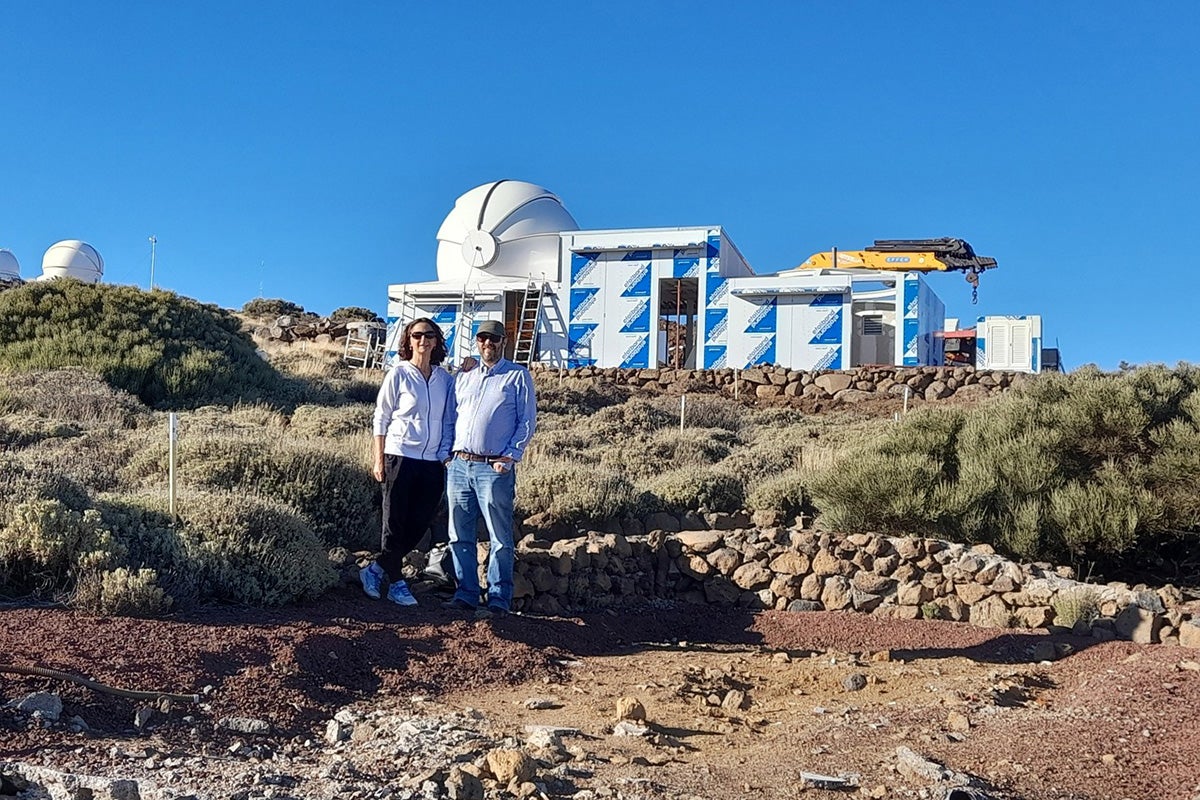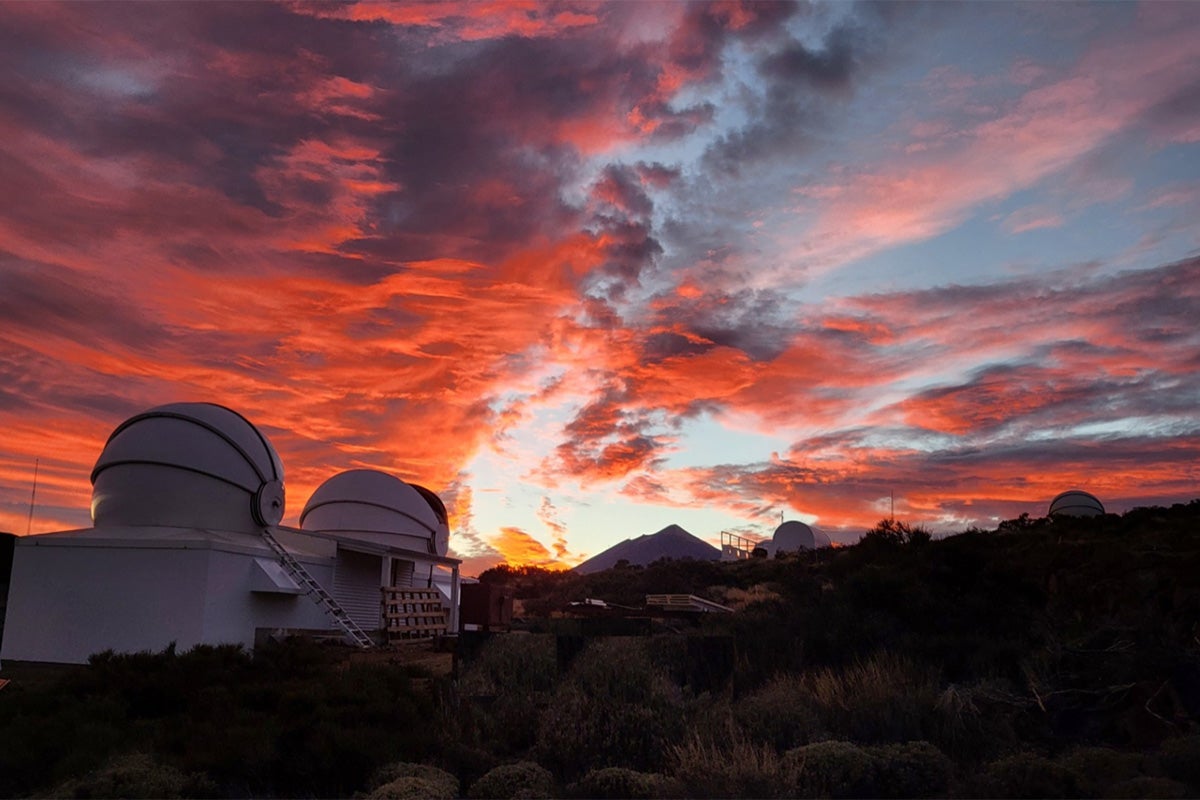A University of Central Florida researcher will be using the newly constructed Two-meter Twin Telescope (TTT) in the Canary Islands, Spain, to study metal-rich M-type asteroids.
The work can inform the study of asteroids like 16 Psyche, an M-type, or metal, asteroid NASA is launching a mission in October 2023 to visit.
The M-type asteroids offer both high concentrations of metals that could be harnessed to make structures in space as well as clues to the formation of asteroids and planets in the solar system.
“For many years, M-type asteroids were thought to be the cores of planetesimals, or small planets, stripped of their silicates and organic mantles by collisions in the early solar system,” says Noemí Pinilla-Alonso, a planetary scientist with UCF’s Florida Space Institute who is leading the research.
“A more recent theory, based on detailed studies of the largest M-type asteroid, 16 Psyche, argues that these bodies formed much closer to the sun, were stripped of their thin crusts while still partially molten, and later dynamically moved to their current location.”
The M-type asteroids are also considered the probable source of iron meteorites.
NASA’s Psyche mission to 16 Psyche, a large M-type asteroid orbiting the sun between Mars and Jupiter, will give researchers a chance to directly examine an iron core like the one located in the center of the Earth. It will also be an opportunity to explore a new type of world — one made of metal, rather than rock and ice.
The UCF research can help inform the mission by providing characterizations of similar, M-type asteroids.
“Missions are a superb source of knowledge for specific targets,” she says. “During a short time, a spacecraft approaches one target staring with a sophisticated suite of instruments to collect as much information as possible. But to succeed at the overarching goal of understanding the formation and evolution of the solar system, the broad picture is crucial.”
“This means we need to know more about the population of asteroids similar to 16 Psyche and determine if the peculiar characteristics of 16 Psyche are unique or if they are shared with the smaller members of the group,” she says.

Pinilla-Alonso’s study will focus on the rotational characteristics of nine M-types asteroids, located in the asteroid belt between Mars and Jupiter.
“This population is supposed to have a large fraction of slow rotators, but this fact is based on the study of a small sample of M-types,” she says. “Extending this sample will provide constraints on the models of the formation and evolution of these metallic asteroids.”
Pinilla-Alonso will use data collected by the robotic TTT to make observations of M-type asteroids to obtain their photometric light curves, which reflect the changes of the properties of the asteroids as they rotate around their own axis. The observations are scheduled to be completed when conditions are optimum.
The private telescopes are located at the Teide Observatory of the Instituto de Astrofísica de Canarias and allow professional research in astronomy with fully robotic observations. In addition to M-type asteroids, it will investigate many other events in the cosmos, including supernovae.
Pinilla-Alonso will be working on the project with Ana Carolina de Souza Feliciano, postdoctoral fellow at FSI; Miquel Serra-Ricart, an astrophysicist with the Instituto de Astrofísica de Canarias; and Antonio Maudes, principal investigator at Spanish startup Light Bridges. The work is supported by a UCF agreement with Light Bridges, which also promoted and financed the construction of the TTT.
“Light Bridges’ initial interest in UCF was related to the Florida Space Institute and the outstanding research that is being done there in several astronomy fields,” Maudes says. “We are excited to collaborate with UCF, to contribute with our best efforts, and to learn from their experience.”
The research is part of Pinilla-Alonso’s work at FSI to study small bodies in the solar system, particularly in relation to NASA exploration missions.
“FSI has a strong observational component, as evidenced by the success of the team in accessing unique telescopes like Webb, Hubble, Gemini or Arecibo,” she says. “In many science projects, collaborations with institutions with telescope access are crucial because it allows us to collect more data. The telescopes are for planetary astronomers as the laboratories are for chemists. It is where we go to collect the data needed to answer fundamental questions about our solar system. Also, planning and executing observations provides unique skills to our students, making observatories an effective tool for education.”
Pinilla-Alonso joined UCF in 2015 as an associate scientist in planetary science at the Florida Space Institute. She is also the deputy principal scientist of the Arecibo Observatory since 2017. She received her doctorate in astrophysics, planetary sciences, and primitive objects in the Solar System from the Universidad de La Laguna in Spain.




